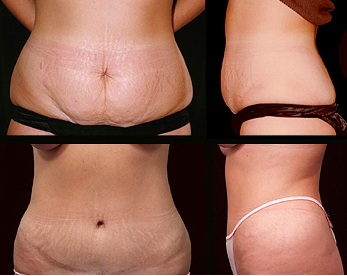
The Tummy Tuck Procedure
Beach season is coming soon, that means it’s time to get that tummy tuck right? But what is a tummy tuck? A tummy tuck is also known as an abdominoplasty. The procedure removes excess skin and fat from the abdomen and produces a profile that is smoother and firmer. The most common causes in excess skin and fat come from: pregnancy, aging, significant fluctuations in weight, heredity, and prior surgeries.
Some individuals may think that with proper dieting and exercise they may achieve a firm abdomen. However, sometimes that is not possible and many opt for a tummy tuck in order to improve their physical appearance. It should be noted that tummy tucks are not substitutes for exercise or weight loss programs. In addition to this tummy tucks will not completely remove stretch marks. So who is a good candidate for a tummy tuck? Two scenarios are the most common: one is recovering from a pregnancy, and another is recovering from fat loss (especially following procedures such as lap band or gastric bypass). Additionally, the patient should be generally healthy and at a stable weight.
So you may wonder what happens during a tummy tuck. There are four main components to the surgery: anesthesia, incision, the closing of the incisions, and recovery. In generally, tummy tucks are considered safe, however there are some certain risks that come with all surgeries. Some complications that could occur during these procedures which can include: blood clots, thrombosis, cardiac and pulmonary complications, or infections. Skin necrosis may be a complication as well, but it is extremely rare. Those who are smokers have an increased risk to necrosis. . Dr. Moliver requires his patients to stop smoking for 6 weeks before surgery. The scars from a tummy tuck will be permanent. However, these lines are usually placed below the swimsuit line so it will be covered by clothes. These lines tend to lighten in color between nine months to a year after the surgery.
Anesthesia: medications will be administered to the patient during the surgery. All tummy tucks performed by Dr. Moliver are under full anesthesia.
Incision: Excess fat tissue and skin is removed and weakened abdominal muscles will be repaired. Incidental umbilical hernias are routinely repaired at the same time. An extra fee may be required if they are larger.
Incision closure: the incisions will be closed with sutures. Dr. Moliver uses progressive tension sutures, which allow for the procedure to be done without utilizing drains after surgery. Recently Dr. Moliver has been using a new medication that is injected into the tissue of the abdomen near the end of the surgery. It’s called Exparel. It is a very long acting local anesthetic that provides pain control for three days.
Recovery: After the initial surgery some patients may be unable to stand completely upright until about 5-7 days typically. All normal activity can resume within six weeks, but some patients return to their jobs in 7-10 days. If you are worried about an abdominoplasty as an outpatient procedure, don’t worry! Dr. Moliver published a paper about this very topic in the Aesthetic Surgery Journal.
So the final question may be, how much does a tummy tuck cost? The price of a tummy tuck includes the following fees: surgeon’s fee, facility costs, and anesthesia. Medications, garments and any lab fees required are extra. Dr. Moliver offers financing plans for patients in order for them to cover the surgery, so be sure to ask. Some patients may require touch up surgeries. Although this is a small percentage. Minor facility fees will be incurred sometimes.

